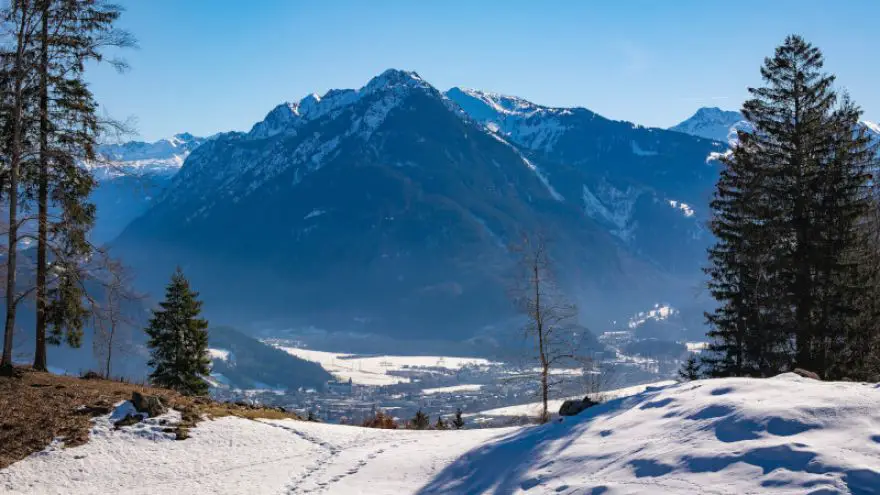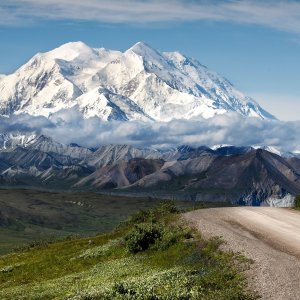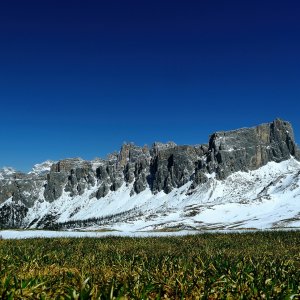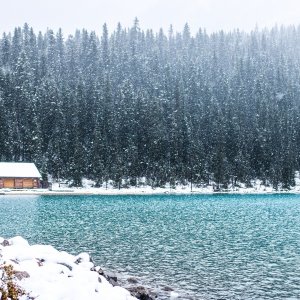An Overview of This Year’s Snow Predictions
 An Overview of This Year’s Snow Predictions
gearweare.net
An Overview of This Year’s Snow Predictions
gearweare.net
As the days get shorter and colder, winter enthusiasts around the country have begun taking their skis and snowboards out of storage to impatiently prepare for a new season on snow. In some parts of the U.S., the hillsides have already been blanketed in white and the lifts have already begun to spin. However, mixed in with the excitement of winter are doubts about how much white stuff will actually fall from the sky this year.
Figuring out what Winter 2018-2019 is going to be like months in advance is a difficult and unpredictable task. Most meteorologists don’t trust predictions about the weather that are more than 10 days out. However, this doesn’t stop weather forecasters from trying. The predictions that are produced can diverge in what they say, and admittedly should not be relied on to heavily, but can still be helpful to those trying to plan a snow sports vacation months ahead.
The Winter 2018-2019 predictions from five popular forecasting sites are detailed below.
 The Farmer’s Almanac
The Farmer’s Almanac
Founded in 1818, this is one of the most trusted sources for long-range weather predictions in the U.S. This year, they are expecting a cold, long winter. The coldest part of the winter will begin in February and hit the following areas the hardest: the Northeast/New England, the Great Lakes, the Ohio Valley, the Midwest, and the Southeast. They also predict that these areas will see an increase in precipitation during this time, which may mean lots of snow. Most of the snow will fall in the Great Lakes, the Midwest, New England, and the Pacific Northwest throughout January and February. The Southeast will also likely see wet conditions during this time, however, higher temperatures mean it will be slushier.
For most areas, November and December will be dry or average, however, the Southwest may see increased participation before the new year. Finally, they predict that March storms on the East Coast as well as in the central Rockies and Plains may drag winter out and increase the potential for more powder days.
 The Old Farmer’s Almanac
The Old Farmer’s Almanac
As the name indicates, this almanac is slightly older than the Farmer’s Almanac. It was founded in 1792 and is just as respected. This year, the Old Farmer’s Almanac is predicting a warmer than average winter everywhere except in the Southwest. They are basing this prediction off of the arrival of a weak El Niño event, which is a warm air current that occurs because of warming in the tropical Pacific Ocean, and will often push cold air masses out of the North. The opposite effect is La Niña, which occurs when the tropical Pacific Ocean cools.
Despite the warm temperatures though, they are also predicting that the interior West and some parts of the country’s midsection will see higher than average snowfall. Besides those areas, they are predicting lower than average snowfall in areas that typically get significant snow. Other areas will still see precipitation, however, it will be in the form of rain and wintery-mix. Finally, they foresee a dry winter in southern California, the Southeast, and the rest of the country’s midsection.
 Accuweather
Accuweather
This site expects mild temperatures to persist in the Northeast, mid-Atlantic, and Great Lakes regions through December. At that point, it will become much colder. Some snow should be expected in these areas, however, it will not be as much as is typical. Their predictions for the Ohio Valley, Midwest, and the central/northern plains are similar. The Southeast will also get this temperature pattern, however, that area may see more storms than is typical.
They foresee this year’s El Niño as pushing moisture into central and northern California, meaning the Southwest is likely to be dry. They also predict that this region will experience warm temperatures, particularly in February. Conversely, the Northwest and northern California may get slammed with snow this year, especially during January and early February. It is also possible that those same weather patterns will bring snow to the Rockies.
 National Oceanic and Atmospheric Administration (NOAA)
National Oceanic and Atmospheric Administration (NOAA)
NOAA is the Federal Government’s center for meteorology. This year they are predicting a warmer than average winter due to El Niño. The areas where they expect to see the greatest above-average temperatures are Alaska and in the northern continental U.S. from the Pacific Northwest to the Northern Plains. They do not predict that anywhere in this country will see below average temperatures this winter.
Greater precipitation is foreseen within the southern part of the U.S. and into the Mid-Atlantic. Arizona, New Mexico, and southern Utah and Colorado are all predicted as possibly seeing a reduction in drought, which could indicate higher snowfall in areas at high elevation. Conversely, the Southwest, southern California, the central and northern Rockies, and the Pacific Northwest may all get less precipitation than is typical.
On the Snow
As the name of this site indicates, On the Snow is strictly dedicated to predicting how much white stuff the ski areas in North America will get. Here, an El Niño event is also predicted. Warmer than average temperatures are foreseen in the west, while the east is anticipated to be colder than normal. The warm temps in the west may cause greater precipitation in the beginning and the end of the ski season, which could bring snow at higher elevations but a wintery-mix at lower elevations. For this reason, California may not get much snow this winter.
They predict that the states that will get the most snow this winter are Montana, Wyoming, Colorado, and New Mexico. The Northeast may also be a good place to ski, as the temperatures are likely to be cold and there is a chance of frequent storms in that part of the country. Specific resorts that are likely bets for average or above average snowfall are listed.











